Wholesale Items to Sell Online – Top Products and How to Sell
If you click to purchase a product or service based on our independent recommendations and impartial reviews, we may receive a commission. Learn more
Whether you’re a hobbyist who’s just learnt how to sell online, a small business owner, or an entrepreneur, selling wholesale products online can give you an advantage by improving your money-making potential. Many of our favorite ecommerce website builders have built-in features perfect for wholesale selling, meaning it’s easier than ever to get started.
This article will provide detailed advice on how to identify the top selling wholesale products and the best way to sell them online.
What Is Wholesale?
Wholesale is the process of buying goods in bulk, usually from a manufacturer, to sell on for a retail price. Wholesale purchasing doesn’t have to be manufacturer-direct; in fact, wholesalers can purchase from other wholesalers.
Usually, wholesale is a B2B process, with wholesalers serving as an intermediary between manufacturers and retailers.
For example, a wholesaler may purchase large quantities of an item from a manufacturer or another wholesaler and sell them on to retailers. The retailers will then sell the items to the end customer.
Wholesale can encompass a wide range of products, in fact you can sell almost anything at wholesale and thanks to the large quantities you’ll be ordering, you can often negotiate a lower unit price, helping to boost your profits.
Selling Wholesale: Pros & Cons
There are many benefits to selling wholesale items online:
- Bulk-buying can give you a price reduction low enough to compete against larger stores.
- It often demands less effort and you’re less likely to run short of the products.
- Your profit margins can be much higher.
But selling wholesale products online isn’t for everyone:
- Choosing the wrong product can cut into profits.
- Popular wholesaler’s products create a lot of competition for you.
- Mistakes in trend predictions can result in being stuck with lots of products that won’t sell.
To figure out if selling wholesale goods online works for you, you’ll need to know the types of wholesale items to sell, where you can find them, and where you can sell them.
Find Out More
Once you know which products you want, learn How To Sell Wholesale in our step-by-step guide.
Best Wholesale Products to Sell
When looking for the best products to sell, there are plenty of factors to consider. Here are four of the most important:
- Demand – Wholesale products you want to sell need to be in demand, which you can research by checking what sells best on websites like Amazon. Some sellers use personal knowledge to figure demand – for instance if you are a lover of Japanese anime, you’ll know which products appeal. Or if you know there’s an upcoming film about a historical figure or comic book, related products could be a great choice.
- Potential profit margin – Profits are more than resell price. There are sales fees, processing, storage, packaging, postage, and insurance that must be figured into profit.
- Competition – The ideal intersection for your wholesale goods is high demand but low seller competition. You can reduce competition by choosing products most sellers haven’t found out about yet, catering to a specific region, or getting your manufacturer to customize your products.
- Opportunity cost – This is simply how much it will cost you to go with one product (or line of products) versus another. Two product options present pros and cons including margin, durability, ease of shipping, etc. Crunch the numbers to figure out what you lose by going with one option versus the other.
There’s no need to feel overwhelmed choosing which wholesale products to sell online, because there are many tools that can help. Let’s have a look at some of the best ways to source products in big categories.
Homeware
Homewares are the most popular online category including home office products like adjustable desks, laptop stands, and high-end home coffee machines, kitchenware, home decor, and furniture.
Kitchen appliances such as blenders, microwaves, and refrigerators are popular wholesale products and there is a high-demand for energy efficient and smart options – something to consider when choosing your stock.
Cookware and bakeware are also easy to source and sell at wholesale, with different styles, sizes, and materials making it a diverse category.
People are always looking for home decor and furniture, which means retailers are always looking for new products to sell. Try to keep ahead of interior trends to ensure you’re offering the most popular and current items.
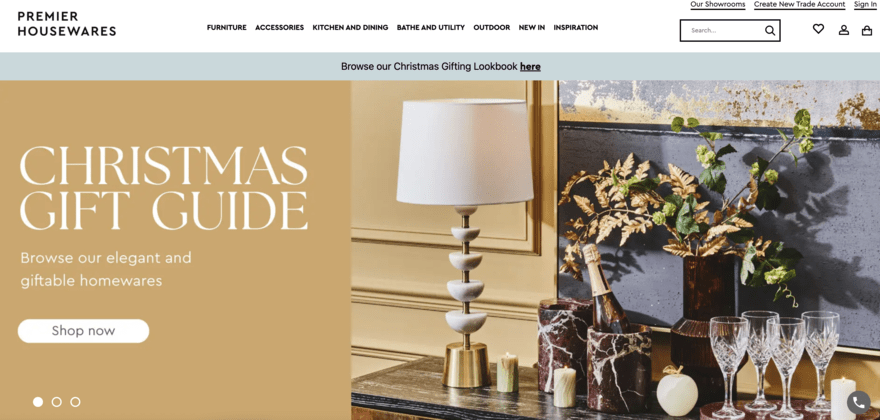
Clothing
Clothing trends and shopping habits are constantly changing so while clothing is a great product to stock and sell at wholesale, it’s important that you keep a close eye on wholesale clothing trends.
Some of the best wholesale clothing items to sell include:
Dresses
Everything from evening gowns and formal wear to summer dresses can make a great product choice for your wholesale company. Keep up to date with the latest trends and dress designs that are proving popular on social media.

Athletic Apparel
If you decide to sell wholesale athletic apparel and sportswear, it’s important to make sure you choose high-quality products that have unique features to make them more appealing such as fast drying fabric and pockets.
T-Shirts and Graphic Tees
T-shirts and graphic tees open up various niche markets for you to target. Tops that feature popular slogans and political stances or that are made from sustainable materials are all likely to be popular.
Education
With tightening budgets, schools, teachers and parents are bulk buying educational products including textbooks, toys, school supplies, and teaching resources making them one of the best wholesale products to sell.
There is always a demand for textbooks and study materials and you can opt to focus on selling materials for a specific subject or age group.
There is also now a stronger focus on learning through play which means educational toys are growing in popularity.
If you do decide to sell educational toys, or anything aimed at children, remember there are often strict safety and quality standards that you will need to meet.
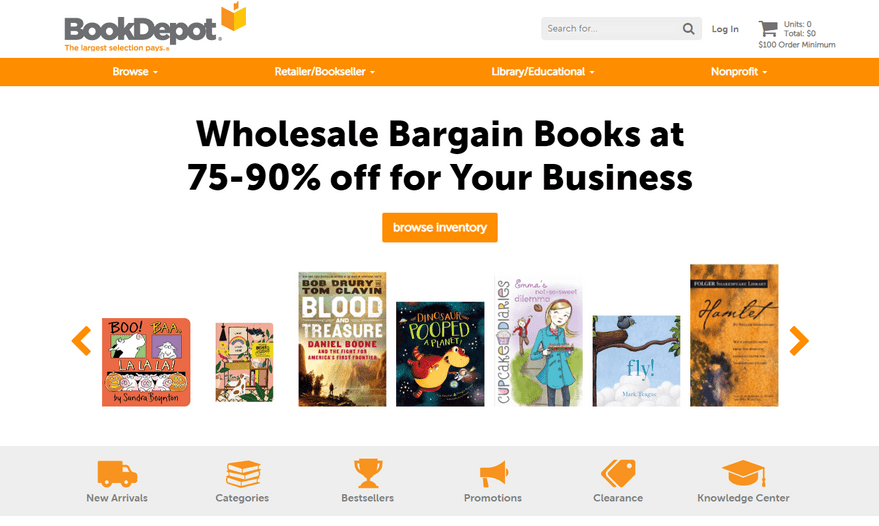
Health and Wellness
By 2027, the health and wellness industry is predicted to be worth $7 trillion dollars. Beauty and skincare, how-to books and courses, clothing, and supplements are a fraction of what’s available, in fact, this is one of the industries with the most product choice available!
So, what wholesale health and wellness items can you sell?
- Dietary supplements and vitamins such as multivitamins and protein powders aimed at specific health goals. Just make sure your products meet strict quality and safety regulations!
- Fitness equipment such as treadmills, dumbbells, and yoga mats are especially popular thanks to the growth in home workouts.
- Personal care and wellness products such as skincare or aromatherapy oils. If you can source and sell natural and eco-friendly options then even better!
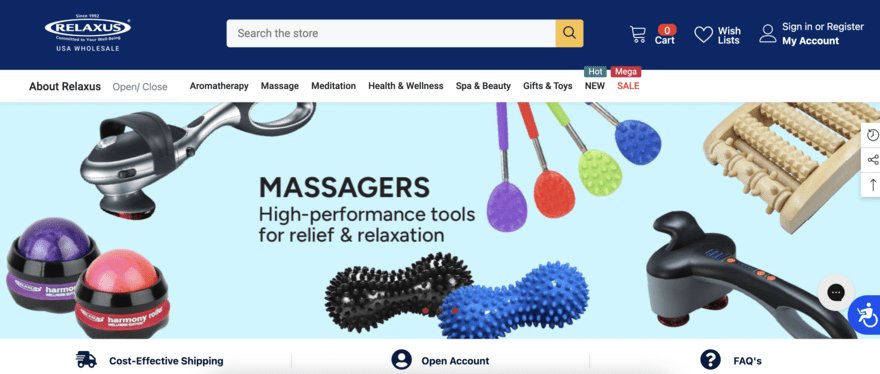
Electronics
This extremely wide category has broad appeal. We all need electronics whether phones, TVs, home appliances, wearable tech, etc. Though the competition is fierce, and electronics date quickly, you can buy in smaller quantities. If you specialize, you’re likely to do better.
Some of the best wholesale items to sell in the electronics category include:
Smartphones and Accessories
Everyone has a smartphone these days and it’s not only the phones themselves you can sell. Smartphone accessories such as cases, headphones, cleaning cloths, and charms can all be bought in varying quantities.
Wearable Technology
Whether you want to track your step count or keep up to date with your messages, wearable technology is a mainstay of modern life. From smartwatches to fitness trackers, there are loads of wearable technology products to choose from.
Home Appliances
When it comes to home appliances, shoppers are looking for modern options that are energy efficient and that have smart properties. If that’s what customers are looking for then it’s what retailers will be after too.
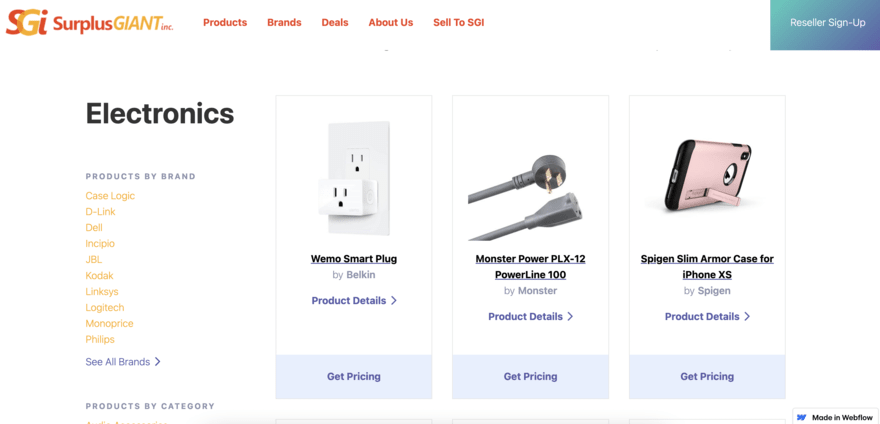
Groceries
There’s huge potential in this category. International and hard-to-get foods, novelty gifts like hot sauces and BBQ sets, and diet-focused foods are all popular online. Remember that unless you choose dropshipping/outsource fulfillment, you’ll be responsible for storing those goods safely to protect the quality of the products.
Non-perishable foods such as canned goods, pasta, and cereals have a longer shelf life and are easier to transport, making them an appealing product option.
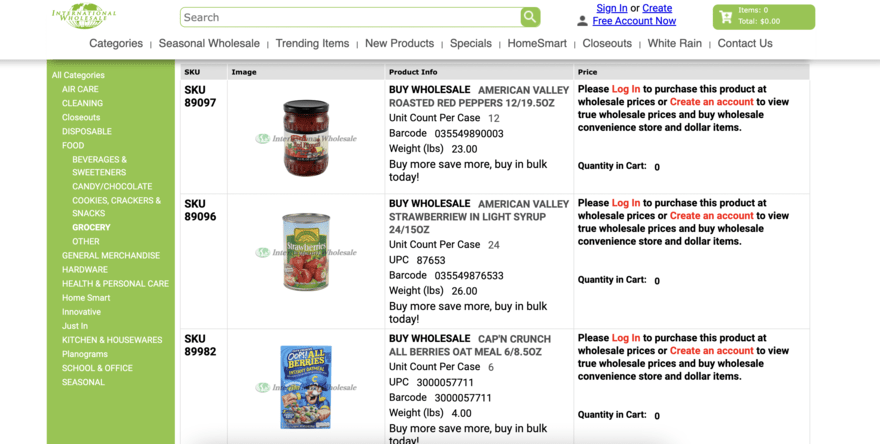
If you do want to opt for fresh food such as fruit and vegetables or locally-sourced produce, you’ll need to invest in the right storage and delivery packaging to keep the food fresh.
With people living increasingly busy lives, on-the-go snacks and ready-made meals are always popular. If you decide to sell these at wholesale, consider opting for a niche selling point such as low-calorie snacks or vegan ready meals.
The Wholesale Grocers Directory requires an initial investment, but will help you with what’s available.
Sourcing Wholesale Products
When looking at sources of wholesale goods, you’re spoiled for choice. Whether online or in person, there are all kinds of options to suit your needs. Here are a good range:
Alibaba – An online wholesale marketplace like Alibaba will give you clear options with price transparency for each product you search. It gives you bulk-buy discounts while you handle the shipping to customers. You’ll have to pay upfront for the products without guarantees you’ll sell the stock. Keep in mind you’ll have to store the products too.
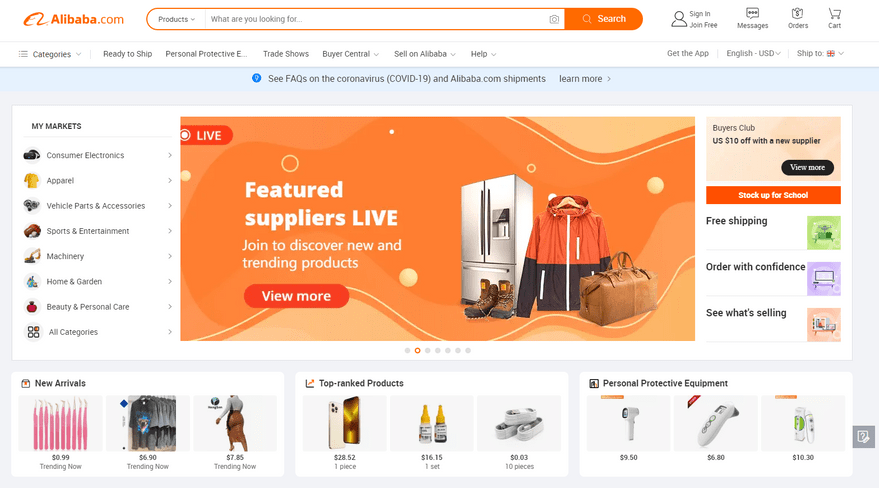
Trade Fairs – At trade shows you can physically touch the products and better judge their quality. You’re in a stronger position to negotiate because reps want to close deals and their competition is the next booth over. The danger is that in the head off the moment you might jump on what looks like a good deal without doing research online.
Trade publications – Sometimes it’s easy to forget that the sourcing process works the other way around – suppliers are looking for you too! They don’t just reach out through fairs and social media, but in specific trade publications that you can order online, at booksellers, or even at the library. In them you’ll find ads, suggestions, and reviews. Just remember to take them with a grain of salt!
Direct from the manufacturer – Why wait for a wholesaler to get their hands on the goods you want? You can often buy straight from the manufacturer. The products can often be customized, and manufacturers know about compliance with product regulations. They can also free you of both scalability and DIY packaging stresses. But bear in mind you’ll pay for your goods upfront and it , you’ll pay for everything up front and may face set-up fees. It might take them months to make that first order. And they could make similar products for your competitors.
Whichever way you source your products, remember that prices are often negotiable. Don’t be afraid to ask questions including whether they make their own products, how many samples they can send, minimum orders, and their return policy.
We’ve written an in-depth article How to Source Products to Sell Online, which provides the options available to you with analysis on the benefits and drawbacks of each.
Where to Sell Your Wholesale Products
There are many places to sell your wholesale products. But depending on the product, one choice will be more suitable than another.
Your Own Online Store
First, let’s look at building your online store, especially if you want to sell from home. After carrying out in-depth research into the best ecommerce platforms, Website Builder Expert recommends three: Wix, Shopify, and Squarespace. We’ve provided links to our in-depth articles on each below.
Wix offers a user-friendly website building experience and a great selection of ecommerce tools. There’s something for everyone and lots of creative flexibility. But you can’t switch your website template once you’re live (unless you want to rebuild from scratch), you must install third-party apps for scalability, and the range of choice can be a little overwhelming.
Shopify is better for larger stores because of its inventory system. It allows you to sell across multiple channels, including Facebook, Instagram, Amazon, and eBay. It also offers payment options and round-the-clock customer support. But it can be challenging to newer users, and has high transaction fees.
Squarespace offers stunning templates, excellent marketing features, and the best support of all the builders we’ve tested. It also has the cheapest plan. But it doesn’t give full customizability and the editor can be high maintenance.
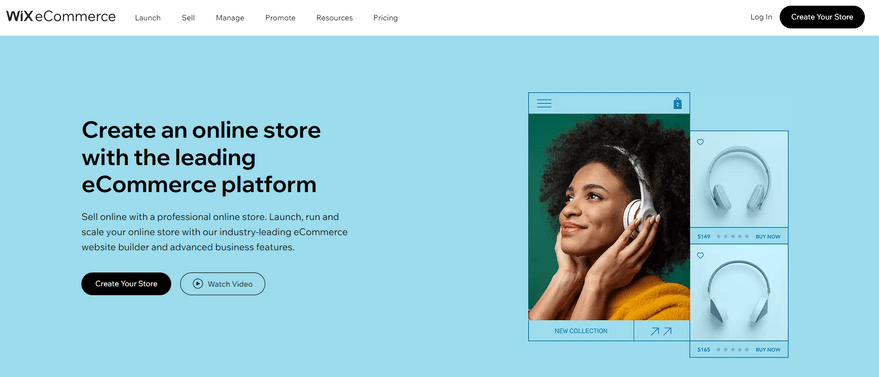
Amazon
If you aren’t interested in having your own website, Amazon provides a great alternative. 26% of its vendors sell wholesale goods to their customers. It provides information on which products are highest rated, have the most competition, earn the biggest profit margins, and are logistically easy to sell.
You’ll have to choose whether you want Amazon marketplace to fulfill your orders, or whether you want to do it yourself. Most vendors who have expensive or fragile items prefer to do it themselves for quality control.
It’s easy to set up a business on Amazon, and Amazon offers great benefits like an affiliate program to boost your sales. But remember there’s a lot of competition, so you’ll spend more time tracking products, trends, and your pesky competitors. If you’re self-fulfilling you’ll also shell out for products with no guarantee you’ll sell them.
eBay
eBay is another attractive and high-visibility option for selling wholesale items online. Choose a seller channel, research which products you want to sell, then gauge how you want to list in accordance with the new seller restrictions. Once you order and list them, you’re on your way.
There are benefits with eBay such as:
- Live auction options and lower fees.
- eBay has an affiliate programme and excellent international reach.
- Customers won’t have the same expectations of free shipping like they do on Amazon (though they still love it!).
There are a few challenges, however:
- The new-vendor limit can limit your sales for months.
- eBay’s simplistic tracking software demands more time keeping track of inventory, returns, trends, and competition.
- You might be tied to listing products during reduced-fee promotions.
- And because eBay doesn’t have a fulfillment center (dropshipping is possible but the rules are complex), you’ll need to store and ship your products.
Summary
Between the bulk-buy price reduction, the ease of finding millions of different products you can sell, and the variety of platforms on which you can sell, wholesale can be a profitable venture.
At the heart of selling wholesale products online is good research that considers all factors of the buying and selling process.
In order to make your online business the best it can be, you need to source the right products at the best price. Once you figure out which type of wholesale items meet your needs, the sky’s the limit.

2 comments